Not all tomatoes are equal when it comes to canning.
While it might seem like any tomato will do, the truth is that some varieties are far superior for making that perfect sauce or salsa for your pantry.
Whether you’re a new or seasoned homesteader, growing the best tomatoes for canning can make all the difference.
Scroll to the bottom for a tomato canning recipe so simple even I can’t screw it up!
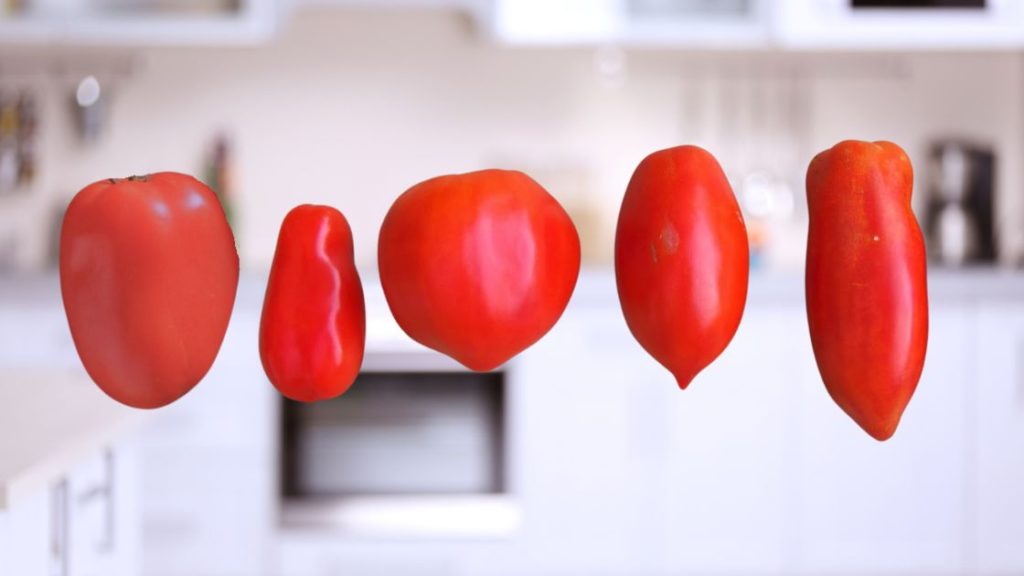
Here are the 5 best tomato varieties for canning:
- Roma
- San Marzano
- Big Mama
- Amish Paste
- Viva Italia
Here’s a bit more about each variety.
1. Roma Tomatoes
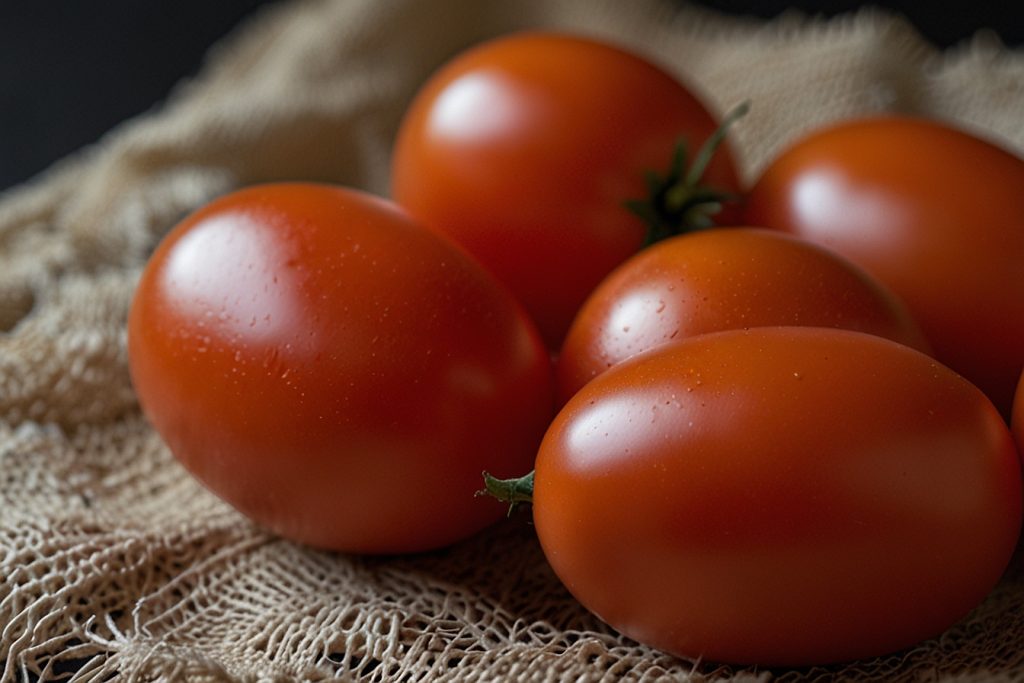
First up, we have the ROMA tomato. These are one of the best canning tomatoes for a reason – meaty, low on juice, and packed with flavor. Roma tomatoes, also known as plum tomatoes, are a staple in the world of canning.
Their dense flesh and lower water content mean less cooking time to achieve that thick, rich sauce we all love. Plus, their oblong shape makes them easy to peel, which is a huge bonus when you’re processing large batches.
Romas bring a balanced sweetness and acidity to your sauces, making them versatile for various recipes.
Whether you’re whipping up a traditional marinara, a spicy arrabbiata, or a hearty bolognese, Roma tomatoes will deliver consistently good results.
Their firmness also means they hold up well during the canning process, ensuring your jars are filled with perfectly textured tomato goodness. Get organic Roma tomato seeds here.
2. San Marzano Tomatoes
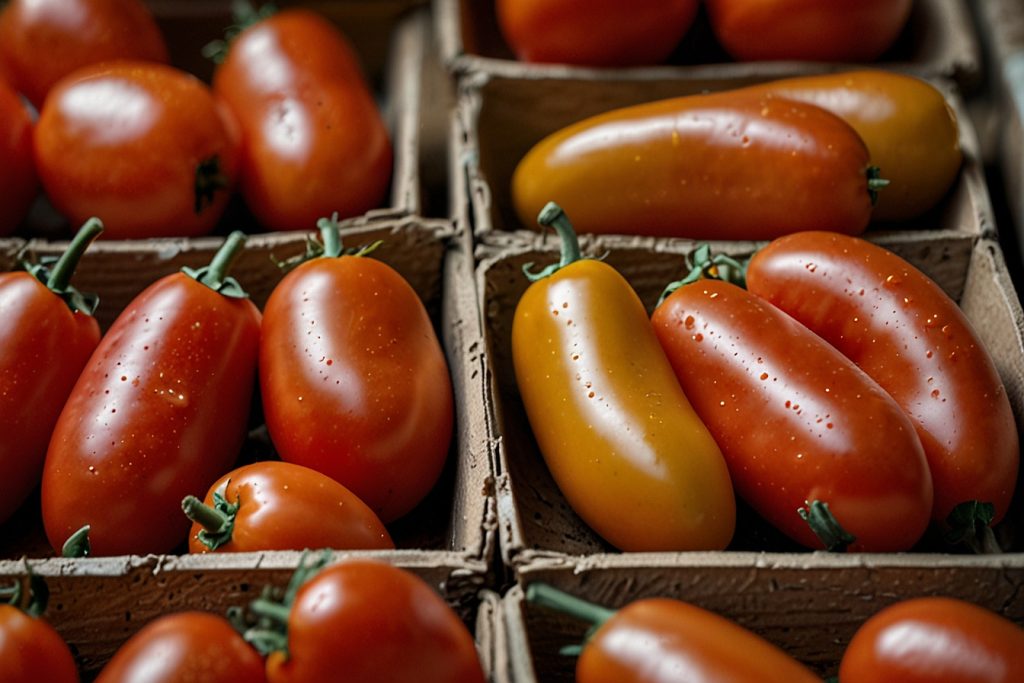
Next, the SAN MARZANO tomato. Known for their sweet and tangy taste, they’re perfect for pizza sauce!
Originating from the small town of San Marzano sul Sarno in Italy, these tomatoes have garnered a reputation for being the gold standard in the culinary world.
Their elongated shape, thick flesh, and minimal seeds make them ideal for creating smooth, velvety sauces.
San Marzanos have a unique flavor profile that’s slightly sweeter and less acidic than other varieties. This makes them amazing for dishes that require a more delicate, nuanced tomato taste.
When you use San Marzano tomatoes in your canning, you’re essentially bottling up a piece of Italian tradition.
San Marzano tomato seeds are a bit more expensive than other types, but many canners agree that the superior flavor is well worth the investment!
3. Big Mama Tomatoes
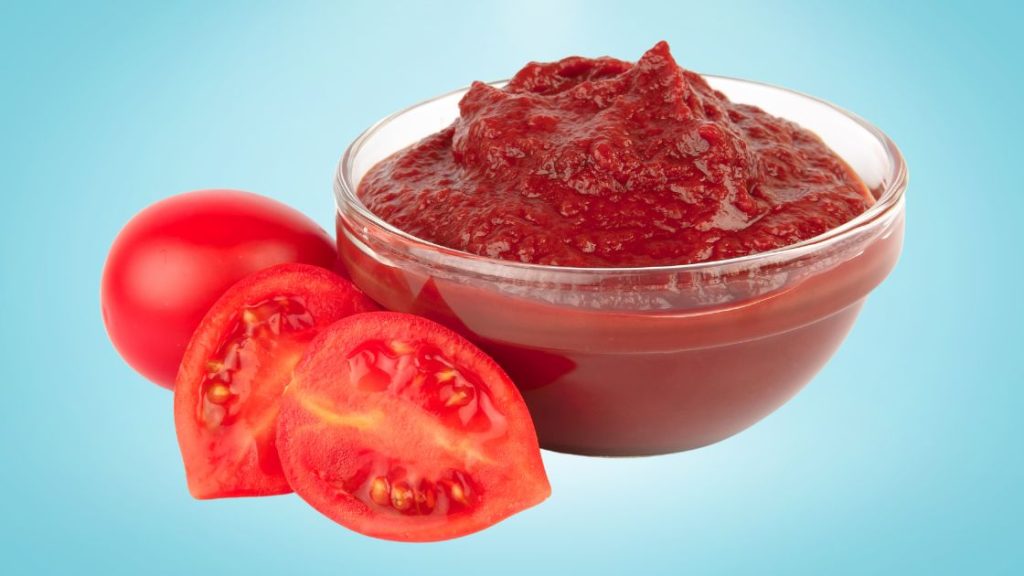
Coming in fourth, the BIG MAMA tomato. With fewer seeds and more flesh, they’re perfect for thick, hearty sauces. Big Mama tomatoes are a hybrid variety that lives up to their name – they’re big, bold, and bursting with flavor.
Their large size and dense flesh make them a dream for canners looking to create substantial, satisfying sauces.
Big Mamas are particularly well-suited for recipes that call for a thicker consistency. Their reduced seed content means less straining and more usable tomato flesh. This can save you time and effort, especially when making large batches.
The robust flavor of Big Mama tomatoes also holds up well to strong spices and herbs, making them a versatile choice for a wide range of sauces. Find Big Mama tomato seeds here.
4. Amish Paste Tomatoes
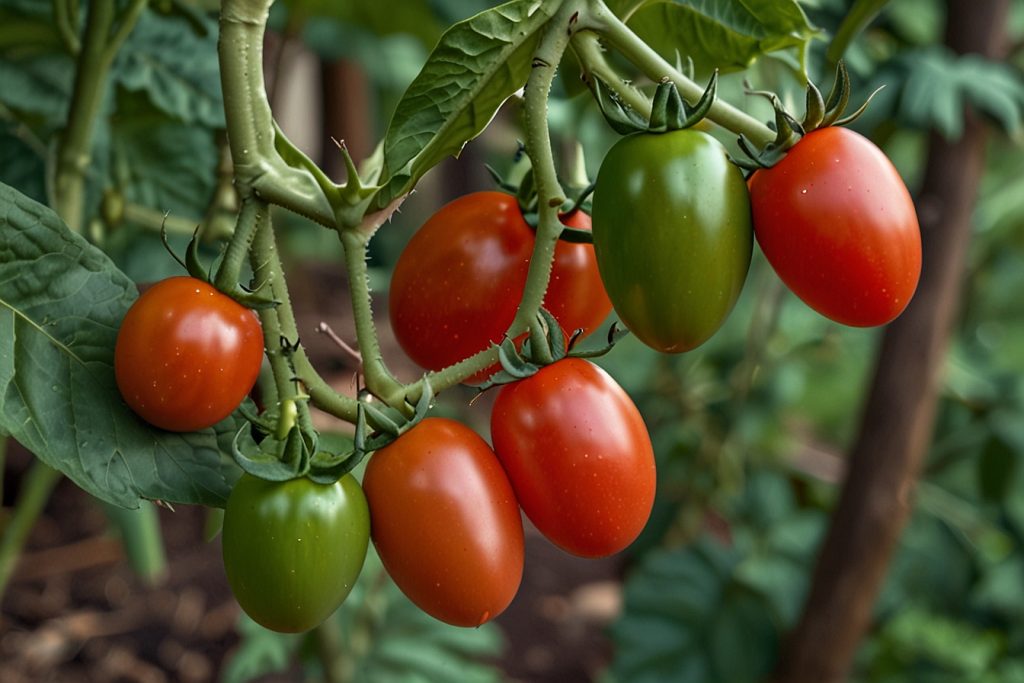
Third, the AMISH PASTE tomato. These heirloom beauties are large, easy to peel, and bring a robust taste to your jars. As the name suggests, Amish Paste tomatoes have a rich history, having been cultivated by the Amish community for generations.
Their size and meaty texture make them one of the best choices for canning.
Amish Paste tomatoes are known for their deep, complex flavor, which intensifies when cooked down into a sauce.
They have fewer seeds and less water content than many other varieties, meaning more tomato flesh per pound. This makes your canning process more efficient and your end product more flavorful.
Whether you’re making a simple tomato sauce or a chunky salsa, the Amish Paste tomato will not disappoint.
5. Viva Italia Tomatoes
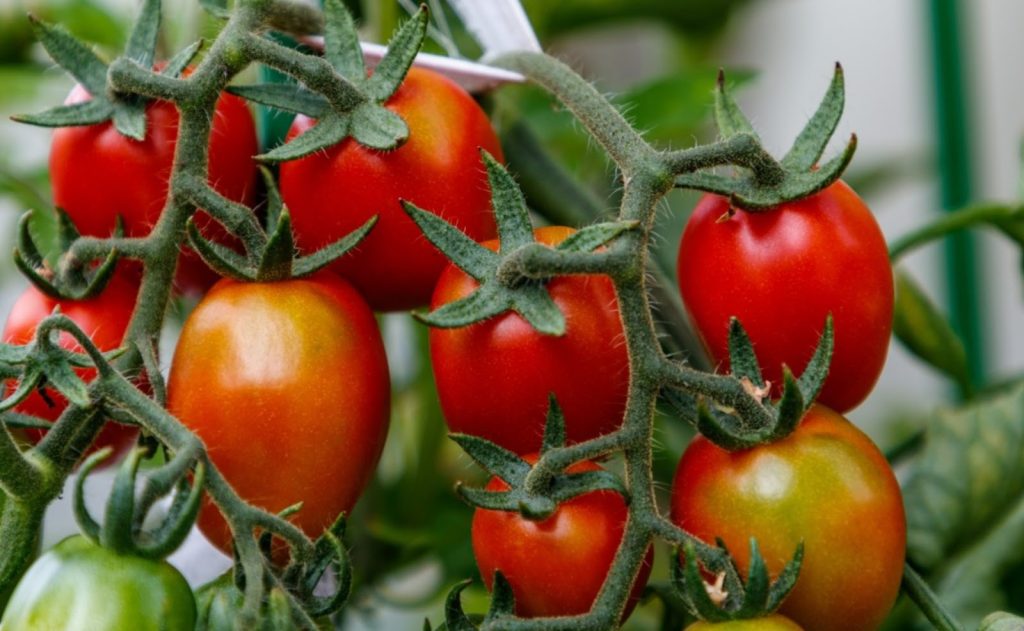
And finally, the VIVA ITALIA tomato. These little guys are versatile and make both great salsas and sauces! Viva Italia tomatoes are known for their bright, tangy flavor and firm texture.
They’re slightly smaller than some of the other varieties on this list, but don’t let their size fool you – they pack a punch when it comes to taste.
Viva Italia tomatoes are incredibly versatile, making them a great option for canners who like to switch things up. Their balanced flavor profile means they can be used in everything from traditional tomato sauces to fresh salsas to the most decadent cuisine.
They also have a relatively low water content, which helps them maintain their shape and texture during the canning process.
Whether you’re making a zesty salsa for your next taco night or a classic tomato sauce for pasta, Viva Italia tomatoes will deliver delicious results every time.
Common Mistakes When Canning Tomatoes
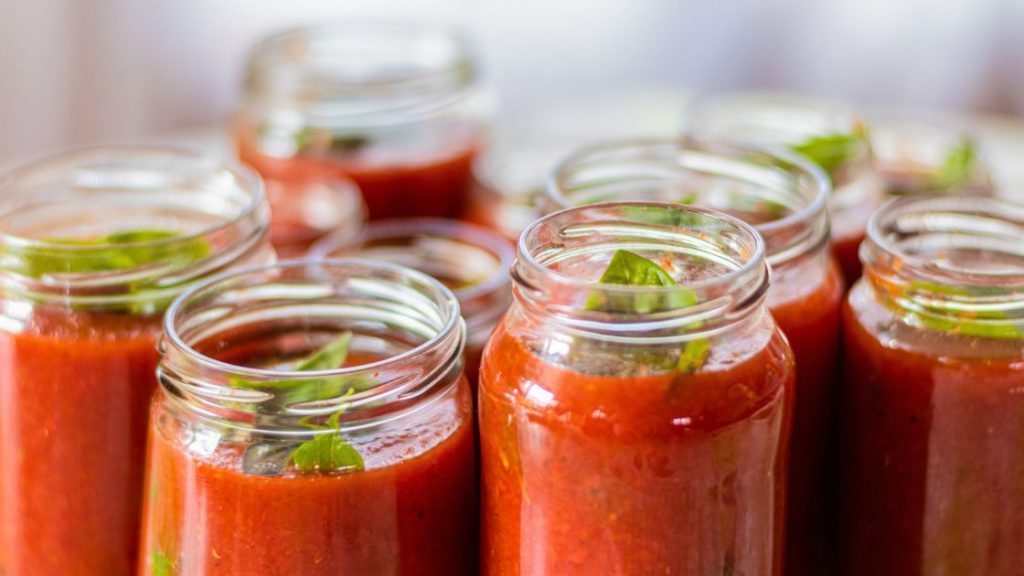
- NOT USING ACIDIFIERS:
Mistake: Skipping the addition of bottled lemon juice or citric acid (or vinegar).
Impact: Tomatoes are on the borderline of being low-acid, which can create an environment where harmful bacteria like Clostridium botulinum can thrive. Acidifying ensures the tomatoes are safe to can and store.
Solution: Always add the recommended amount of bottled lemon juice (2 tablespoons per quart or 1 tablespoon per pint) or citric acid (1/2 teaspoon per quart or 1/4 teaspoon per pint) to each jar before filling it with tomatoes.

- IMPROPER PROCESSING TIME:
Mistake: Not processing jars for the correct amount of time or at the correct pressure (for pressure canning).
Impact: Inadequate processing can lead to improperly sealed jars, spoilage, and potential health risks.
Solution: Follow tested recipes and guidelines for processing times and methods. Adjust for altitude if necessary. Water bath canning typically requires 35-45 minutes for pints and quarts, while pressure canning times and pressures vary based on jar size and recipe.

Table Source: University of Minnesota
Easy Tomato Canning Recipe For Diced or Stewed Tomatoes
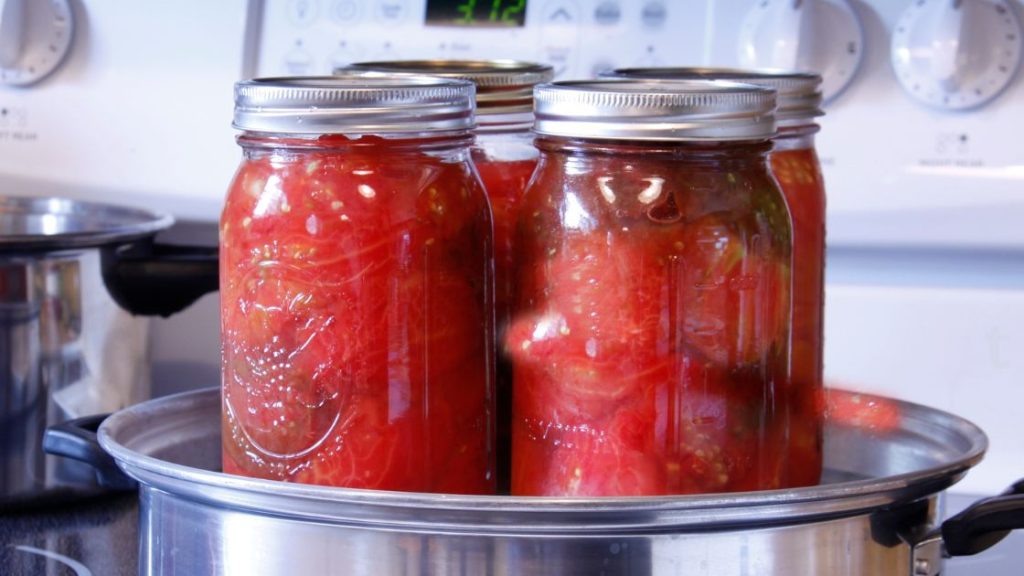
The simple recipe below shows you how to can tomatoes so your pantry will be stocked through the winter with garden-fresh tomatoes.
INGREDIENTS
- Garden fresh ripe tomatoes (about 3 pounds per quart jar)
- Lemon juice or citric acid
- Salt (optional)
EQUIPMENT
- Canning jars with lids and bands
- Large pot for boiling water (water bath canner)
- Jar lifter
- Funnel
- Bubble remover or a non-metallic spatula
- Clean cloth or paper towels
Instructions For Canning Tomatoes
Prepare the Jars and Lids:
- Wash jars, lids, and bands in hot, soapy water. Rinse well.
- Place jars in a large pot of hot water and heat until ready to use. Keep the jars hot to prevent them from breaking when filled with hot tomatoes.
Prepare the Tomatoes:
- Wash tomatoes thoroughly.
- Remove the skins by blanching: boil a pot of water, dip tomatoes in boiling water for 30-60 seconds until skins split, then transfer immediately to a bowl of ice water. Peel off the skins and remove any cores.
Pack the Jars:
- Add 2 tablespoons of bottled lemon juice or 1/2 teaspoon of citric acid per quart jar (1 tablespoon lemon juice or 1/4 teaspoon citric acid for pint jars) to ensure safe acidity.
- Add 1 teaspoon of kosher salt per quart jar, if desired (1/2 teaspoon for pint jars).
- Pack peeled tomatoes into the hot jars, pressing them until spaces between them fill with juice, leaving 1/2-inch headspace at the top.
- You can use a bubble remover tool or a non-metallic spatula to remove air bubbles by running it around the inside edge of the jar.
Seal the Jars:
- Wipe the rims of the jars with a clean cloth or paper towel to remove any residue.
- Place the lids on the jars and screw on the bands until fingertip tight.
Process the Jars:
- Place the filled jars in the water bath canner, making sure they are covered with at least 1 inch of water.
- Bring the water to a boil and process quart jars for 45 minutes (40 minutes for pint jars).
- Adjust processing time if you are at an altitude above 1,000 feet.
Cool and Store:
- Carefully remove jars from the water bath canner using the jar lifter and place them on a towel or cooling rack.
- Allow the jars to cool undisturbed for 12-24 hours.
- Check seals: the lids should not flex up and down when the center is pressed. Any jars that did not seal properly should be refrigerated and used promptly.
- Label and store sealed jars in a cool, dark place. Properly sealed and processed jars can be stored for up to one year.
Tomato Canning FAQs
What’s the best way for canning tomatoes?
According to USDA guidelines, tomatoes can be safely canned in a boiling-water canner, steam canner, or pressure canner. However, some say that pressure canning can result in a higher quality product.
Do I need to cook tomatoes before canning?
No, but it may be preferable to cook tomatoes before canning to help break them down, making them easier to pack into jars, and it also reduces the risk of spoilage by eliminating harmful bacteria.
Do I need a pressure canner for tomatoes?
A pressure canner is not always necessary for canning tomatoes, but it’s recommended for certain recipes to ensure safety. You can use a water bath canner if you add acid, like lemon juice or citric acid, to balance the pH. However, a pressure canner is ideal for canning tomatoes without added acid or in mixed recipes like sauces with low-acid ingredients.
Can I raw pack tomatoes for canning?
Yes, you can raw pack tomatoes for canning, but it’s important to add acid, like lemon juice or citric acid, to ensure safety. Raw packing involves placing uncooked tomatoes into jars and covering them with hot liquid, though this method may result in more floating and water separation compared to hot packing.
Share this article with a homesteader you know! Grow, Raise, and Preserve with us on social media!
See Our Latest Posts
- Simple Recipes for DIY Herbal Salves and Balms
- Delicious One-Pot Homestead Meals from Pantry Staples
- 5 Best Meat Dehydrators for DIY Jerky on Amazon (2025)
- Urban Homestead Hacks from Backyard to Balcony
- Creative Strategies for Frugal Homesteading
Write A Guest Post For Us!
Are you passionate about gardening, raising livestock or preserving food? We’re excited to announce that we’re now accepting guest posts for all aspects of homesteading!
